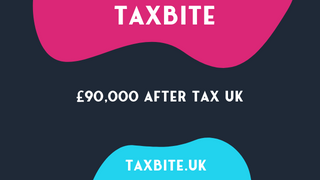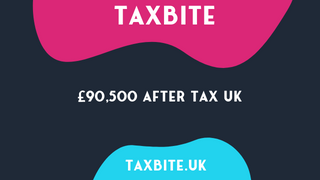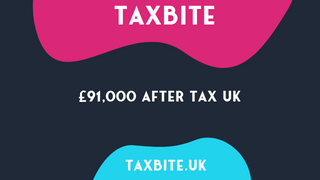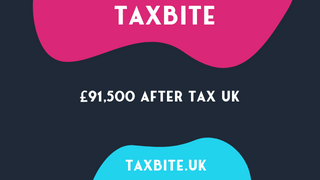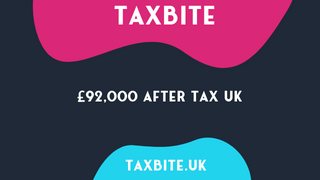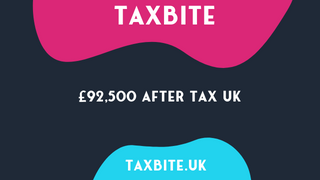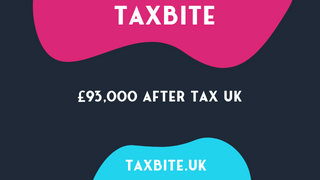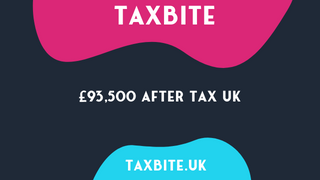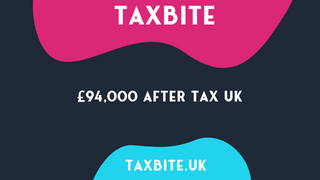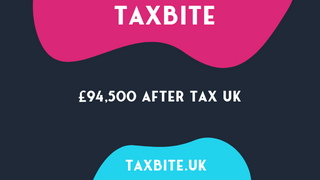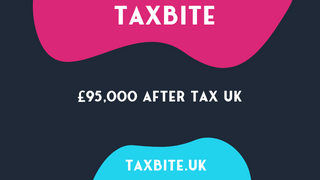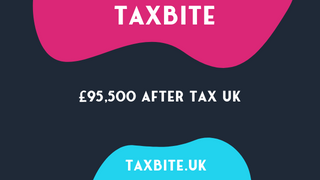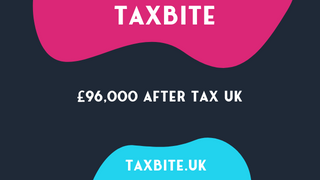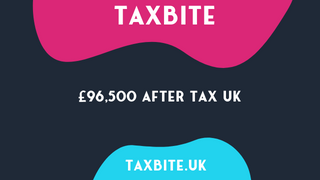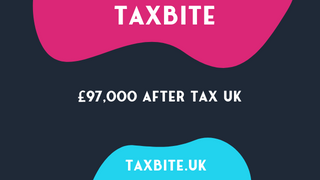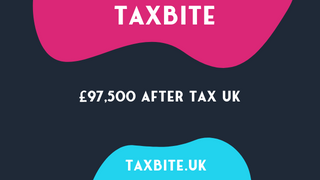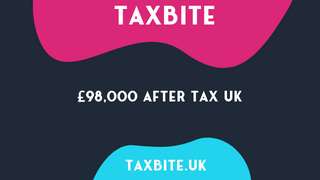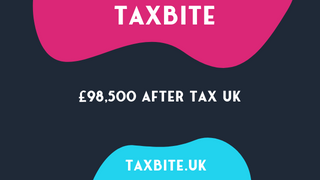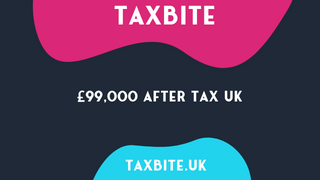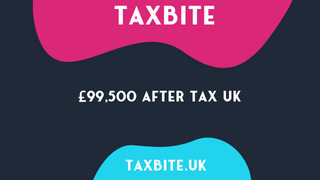Understanding income tax in the UK can be overwhelming, but it is a crucial part of managing your finances. Income tax is a tax on income, including salaries, wages, and rent received. Personal allowances and tax bands determine the amount of income tax you owe.
The tax-free personal allowance for the year 2022/23 is £12,570 and the basic rate band is £12,571 to £50,270, the higher rate band is £50,271 to £150,000, and the additional rate band for incomes above £150,000 is 45%. Exemptions and tax relief can also help reduce your tax liability.
With an estimated income of £92,000 before tax in 2022/23, it’s important to understand income tax to ensure you’re not overpaying and are making the most of available exemptions and tax relief.
Income tax is a tax the UK government charges on an individual’s earnings. It’s simply taxes taken from income from various sources, like jobs, rentals, savings interest and dividends.
The UK’s taxes are split into bands, each with a different rate. These rates depend on how much you earn. The table below explains the income bands and their associated tax rates:
| Income Band | Tax Rate |
|---|---|
| Up to £12,570 | 0% |
| £12,571 – £50,270 | 20% |
| £50,271 – £150,000 | 40% |
| Over £150,000 | 45% |
The personal allowance means that earnings up to a certain amount are exempt from income tax. For 2021/2022, the allowance is £12,570.
You also have to pay National Insurance contributions (NICs) if you make more than a certain amount. These payments go towards state benefits like sick pay and pensions. Money from personal pension contributions can reduce the amount of taxes owed.
To sum it up, income tax is a tax on earnings and there are different kinds subject to taxation. It’s important to know the tax bands and allowances to accurately calculate taxes owed.
The UK’s personal allowance and tax bands are key parts of the British tax system. The personal allowance is the amount of income that is tax free. In the 2021/22 tax year, the personal allowance is £12,570. Taxes are then charged depending on different income tax bands. The basic rate band is £12,571 to £50,270, with a tax rate of 20%. The higher rate band is £50,271 to £150,000, with a tax rate of 40%. Anything over the higher rate band is taxed at 45%.
It is important to remember that personal allowances and tax rates can change every year. Different types of income are taxed at different rates, or may not be taxed at all. For example, up to £2,000 of dividends are tax free, and up to £1,000 of savings interest may be non-taxable for some cases. Additionally, certain benefits, like Child Benefit, can affect your personal allowance if your income is over a certain level.
In general, knowing your personal allowance and the income tax bands is useful for working out your tax liabilities each year and planning your finances accurately. There have been changes in taxation rules over time. For instance, in the 2019/20 tax year, the personal allowance rose to £12,500. Also, new thresholds were introduced in the 2020/21 tax year for National Insurance payments, while initial rates stayed the same. Lastly, the Covid-19 pandemic led to special measures such as the Self-Employed Income Support Scheme.
When calculating after-tax income, it’s key to consider exemptions and tax relief. Exemptions mean income not taxable, while tax relief lowers the taxable income amount. Examples are pension contributions and charity donations.
Individuals may qualify for specific deductions or exemptions based on their situation. Self-employed people can deduct their business costs from taxable income. Those with disabilities or caring duties can also get certain allowances.
But claiming exemptions and tax relief may be complex. It’s best to get expert advice before making claims. Errors can lead to penalties from HM Revenue & Customs.
Thus, it is important to understand what exemptions and forms of tax relief are available. By researching all options and consulting guidance when needed, individuals can maximize their income and reduce their tax burden.
Calculating take-home pay for a £92,000 income after tax can be challenging, but fear not! In this section, we’ll provide some sources to simplify your calculations. We’ll also compare net income after tax for residents in England, Wales, Scotland, and Northern Ireland. Additionally, we’ll break down the deductions for a £92,000 income after tax in England, Wales, and Northern Ireland. Finally, we’ll examine the effect of bonuses on net income. Don’t worry, we’ve got you covered!
Calculating post-tax income has many sources. In the UK, tax calculators are popular. They take into account personal allowances, tax rates, and national insurance contributions. HMRC provides info regarding tax codes, allowances, and calculations.
Payslips and P60 forms are issued by employers at the end of each tax year. Self-employed or those with extra income may need to fill in self-assessment tax returns.
Tracking income sources throughout the year is essential for accurate tax liability calculations.
Taxable income in the UK includes: employment, rental from property investments, profits from self-employment or business, and capital gains. Deductions or allowances may also affect post-tax earnings, such as child benefit means testing thresholds or claiming relief on charitable donations.
HMRC’s Personal Tax Account (PTA) helps individuals track sources of taxable and deductible income. This makes wise decisions about finances in relation to after-tax earnings over time.
When it comes to net income after tax in the UK, there are variations between residents of England, Wales, Scotland, and Northern Ireland. This can affect take-home pay and where someone lives or works.
An example of this is a hypothetical breakdown of income tax for a person making £92,000 after tax. Personal allowance and basic rate stay the same, but the higher rate threshold and additional rate differ.
For instance, Scotland has a lower higher rate threshold of £43,663 compared to £50,271 in other places. Wales and Northern Ireland also have higher additional rates than other regions, with Northern Ireland’s being 2%.
Scottish taxpayers get extra allowances such as property taxes or landfill tax relief. Plus, they can claim Gift Aid on donations to charities in the EEA.
To sum up, knowing the laws on income tax for different regions of the UK, and available reliefs, can help reduce liabilities and change the level of net income after tax depending on where someone lives.
Income tax deductions are a must-know when calculating after-tax income in the UK. For a £92,000 salary in 2023/2024, the breakdown of deductions for England, Wales and Northern Ireland is essential.
The table below provides a comprehensive breakdown:
| Deductions | England | Wales | Northern Ireland |
|---|---|---|---|
| Income tax | £32,486.25 | £32,346.25 | £32,386.25 |
| National Insurance contributions | £5,516.68 | £5,499.48 | £5,447.08 |
| Net income after tax and NICs contributions (take-home pay) | £53,997.07 | £54,154.27 | £54,166.67 |
Apart from income tax and NICs, other deductions like student loan repayments and pension contributions should also be considered.
These deductions might differ depending on an individual’s employment status or type of work contract, for instance self-employment or partnerships.
A real life example of this would be someone who did not initially factor in student loan repayments when computing their take-home pay for a £92,000 salary job offer in England. After receiving their first payslip, they needed to recalculate net income considering this deduction.
It is essential to keep in mind the effect on net income after tax before expecting a large bonus.
Considering bonuses’ impact on net income? It’s important to know they are taxable. In 2023/2024 tax year, bonuses will be taxed at rates from 20-45%, depending on the individual’s allowance and tax bands.
A bonus can push taxable income into a higher tax bracket, resulting in more tax and less take-home pay. Yet, those with unused allowances or deductions can reduce the tax impact.
Employers may opt for a separate PAYE system for bonuses, to reduce admin burden or issues in the payroll cycle. Employees will get different payslips and withholding for bonus payments.
Adjusting your after-tax income can be a complex process. In this segment, we will explore additional factors that may affect your finances and provide essential tips for optimizing your post-tax earnings.
For example, if you have student loan repayments, they will impact your after-tax income. Additionally, if you make pension contributions, this will also affect your take-home pay. Furthermore, it’s important to note that there is no hourly rate associated with a £92,000 salary as it is an annual figure.
Stay tuned to learn how to effectively recalibrate your finances and ensure financial stability.
When it comes to student loan repayments in the UK, salary matters. If someone earns more than £27,295 per year, other factors, such as loan type and repayment plan, may need adjusting.
To avoid fees, borrowers must keep track of any changes to their loan and plan. This includes interest rates. Those with multiple loans should prioritize payments or consolidate their loans. If necessary, they should seek professional advice from a financial advisor or loan servicer.
Neglecting to stay informed about student loan repayments can impact credit scores and future borrowing opportunities. So, borrowers need to stay proactive and get help when needed.
Additionally, when planning for retirement, take-home pay should be adjusted for pension contributions. These actions can help people take control of their finances and secure a more stable financial future.
When discussing pension contributions, adjusting them can make a huge difference to someone’s income tax and take-home pay. There are two options: net pay and relief at source. In a net pay arrangement, deductions are made from gross salary before tax calculation. With relief at source, the pension scheme adds basic rate income tax relief to the contribution instead of taking out taxes first.
Remember, there’s a limit to how much you can contribute annually without owing extra taxes. In 2021/22, this is £40,000.
In conclusion, understanding available options and limits on pension contributions can help people make educated decisions about their finances. Whether it’s net pay or relief at source, adjusting pension contributions can significantly affect an individual’s tax responsibility.
In the UK, income tax is based on someone’s salary – like a £92,000 one. To know the hourly rate for full-time work, it’s important to know the personal allowance and tax bands. These depend on a person’s situation – like age and blindness. In 2021/2022, the basic rate band for England, Wales and Northern Ireland is £50,270 a year.
A table has been made to show net income – after tax – for people in different parts of the UK with a £92,000 salary. For example:
| Location | Net Annual Income | Hourly Rate |
|---|---|---|
| England | £58,940 | £30.38 |
| Wales | £59,507 | £30.70 |
| Scotland | £55,355 | £28.51 |
| Northern Ireland | £59,507 | £30.70 |
It’s good to remember that student loan repayments and adjusting pension contributions may also affect take-home pay at this salary level. But they usually have a good outcome.
In 2023/2024 the UK tax year, an individual earning a salary of £92,000 will be subject to income tax and NI contributions. But, the government gives a personal allowance of £14,067. This means only the remaining amount will be taxed, resulting in a net after-tax income of approx. £61,876 annually.
A table showing salary components, gross pay, taxable amount and net pay can be created. The tax rate varies with income bracket. Things such as pension contributions and student loan payments will affect net pay. So, it’s best to seek a tax professional for a detailed analysis and exact estimation of the net pay.
To sum up, an individual earning £92,000 in the UK during the 2023/2024 tax year can expect a net after-tax income of approx. £61,876. It’s important to consider factors that may influence the final net pay. Thus, consulting a tax professional is wise.
For residents in England, Wales, and Northern Ireland, the net income after tax is £61,059.10, while for residents in Scotland, it is £59,091.03 due to different tax brackets.
The deductions that make up the net income after tax include income tax and national insurance.
The take-home pay for a £92,000 salary in the UK is typically used for living expenses, savings, investments, and other discretionary spending.
The marginal tax rate for a £92,000 salary in the UK is 43.3%, which means that immediate additional income will be taxed at this rate.
A £5,000 bonus generates an extra £2,838 of net income for a £92,000 salary in the UK.
Income tax is calculated based on the total earnings and how much of it falls above the personal allowance. There are different tax bands, and the amount of income determines which tax band it falls into and how much tax will be deducted. The tax rates and allowances are calculated based on the total income earned.
Here’s a list of similar salaries:
